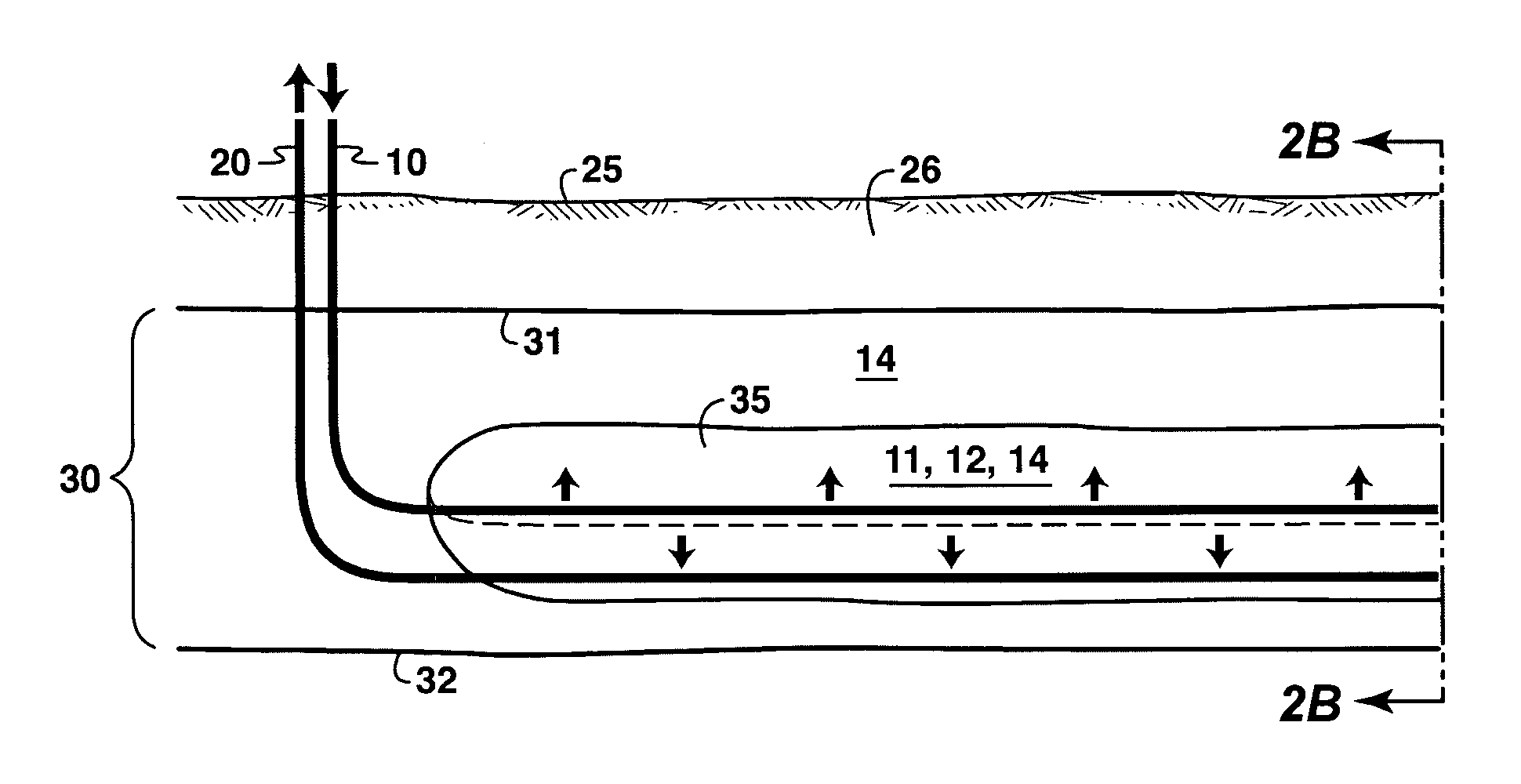Process for in situ recovery of bitumen and heavy oil
a bitumen and heavy oil technology, applied in fluid removal, chemistry apparatus and processes, borehole/well accessories, etc., can solve the problems of non-condensable gas, adversely affecting the economics of the process, add cost and complexity to the process, etc., and achieve the effect of appropriate economic recovery rates and enhanced solvent solubility
- Summary
- Abstract
- Description
- Claims
- Application Information
AI Technical Summary
Benefits of technology
Problems solved by technology
Method used
Image
Examples
Embodiment Construction
[0048]With reference to the figures, a solvent-assisted vapor extraction with steam (SAVES) process for recovery of in situ bitumen or heavy oil is described. Generally, the present invention is a unique sequence of solvent / steam injections that achieves optimum and economical hydrocarbon production from a heavy hydrocarbon reservoir.
[0049]In general, heavy hydrocarbons remain more viscous at higher temperatures than light hydrocarbons at the same temperature, and heavy hydrocarbons also have higher dew points. Therefore, at lower temperatures and a given pressure, a light hydrocarbon will remain in the gaseous state, while a heavy hydrocarbon may be a viscous liquid at the same temperature and pressure. The effectiveness of a hydrocarbon to be used as a bitumen solvent will depend on the temperature and pressure conditions present within the reservoir and are important in the selection of an appropriate solvent.
[0050]Further, in a bitumen drainage recovery process, it is advantageo...
PUM
| Property | Measurement | Unit |
|---|---|---|
| temperature | aaaaa | aaaaa |
| temperature | aaaaa | aaaaa |
| temperature | aaaaa | aaaaa |
Abstract
Description
Claims
Application Information
 Login to View More
Login to View More - R&D
- Intellectual Property
- Life Sciences
- Materials
- Tech Scout
- Unparalleled Data Quality
- Higher Quality Content
- 60% Fewer Hallucinations
Browse by: Latest US Patents, China's latest patents, Technical Efficacy Thesaurus, Application Domain, Technology Topic, Popular Technical Reports.
© 2025 PatSnap. All rights reserved.Legal|Privacy policy|Modern Slavery Act Transparency Statement|Sitemap|About US| Contact US: help@patsnap.com



